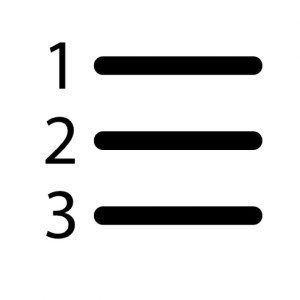BJ Novak, writer, actor and author, can now add app developer/CEO to his resume. Earlier this month Novak publicly launched his latest endeavor, The List App, after over a year in beta during which it was exclusively available to every Hollywood celeb you’d want as a best friend. The List App is just that – an interactive platform where users can create, share and interact with lists on any subject under the sun. A few highlights from the October 14th launch included Mindy Kaling’s list of “What I Get at Whole Foods” and Jimmy Fallon’s list of “7 People Who Look Like Me.”
 As a PR professional, I’ve become conditioned to think in lists. My to-do list rules my world. My team and I are constantly brainstorming short lists of tips we can craft to plug into pitches. When perusing outlets to determine what’s trending, I find myself exponentially more likely to click on a story broken down into a list than a general topic piece. And don’t get me started on the phenomenon of BuzzFeed.
As a PR professional, I’ve become conditioned to think in lists. My to-do list rules my world. My team and I are constantly brainstorming short lists of tips we can craft to plug into pitches. When perusing outlets to determine what’s trending, I find myself exponentially more likely to click on a story broken down into a list than a general topic piece. And don’t get me started on the phenomenon of BuzzFeed.
It’s been established audiences love lists, but why? With all the chaos that comes with everyday life, lists keep us in order. I’m also of the opinion it’s far easier to digest a number under 10 when consuming content. In the age of social media, users are constantly pulled in umpteen directions, simultaneously. When media outlets are competing for views, they have to sell the story in the headline. Publications have a fraction of a second to catch the eye (and the click) of the reader and so enters the list.
Now that I’ve outlined the “why,” it’s important to dissect the types of lists readers interact with. There’s the prevalent, meme-filled Buzzfeed-style list, usually comprised of uncredited content pulled from Tumblr. There’s the cautionary list that simplifies an otherwise daunting topic (e.g., 3 things you’re not doing before breakfast that might kill you). And finally there’s the sponsored list, which is developed by a brand or initiative with a mission. For example, a mouse trap company looking for media exposure might develop a list of “5 ways to rid mice from your home,” with the end goal of selling more traps, of course. This is the most dangerous list as it has the potential to leverage or hurt a brand.
Building a listicle is a tricky business. One drawback is, readers can instantly recognize self-serving content when laid out in a bulleted format. However, that does not mean brands can’t engage with their audience through this medium. It will just require an extra level of authenticity. My advice for brands looking to develop lists intended for public relations purposes is to involve outside contribution and stick within its expertise. Just as press coverage serves as external validation, third-party contribution to a list can add value otherwise unattainable.
With BuzzFeed generating over 33 million unique visitors per month and counting, and The List App adding thousands of users in the first two weeks, it’s safe to say the list is here to stay. When brands insist on riding the list bandwagon, it’s important to keep in mind that authenticity, quality of content, and succinct language make for good lists, not just memes.
By Rachel Rauth